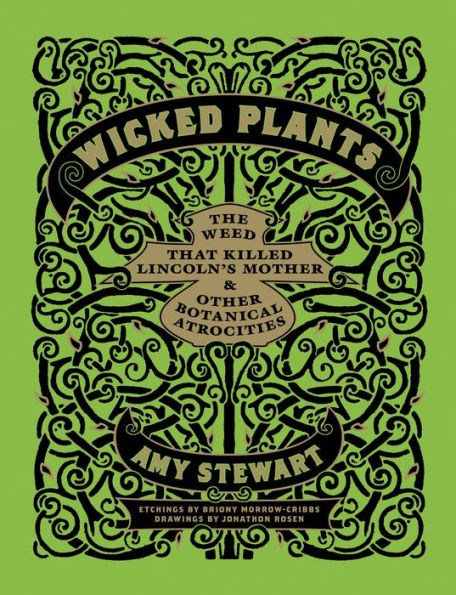Read an Excerpt
Wicked Plants
THE WEED THAT KILLED LINCOLN'S MOTHER & OTHER BOTANICAL ATROCITIES
By Amy Stewart
Algonquin Books of Chapel Hill
Copyright © 2009 Amy Stewart
All right reserved.
ISBN: 978-1-56512-683-1
Chapter One
Aconite ACONITUM NAPELLUS
In 1856 a dinner party in the Scottish village of Dingwall came to a horrible end. A servant had been sent outside to dig up horseradish, but instead he uprooted aconite, also called monkshood. The cook, failing to recognize that she had been handed the wrong ingredient, grated it into a sauce for the roast and promptly killed two priests who were guests at the dinner. Other guests were sickened but survived.
Even today, aconite is easily mistaken for an edible herb. This sturdy, low-growing herbaceous perennial is found in gardens and in the wild throughout Europe and the United States. The spikes of blue flowers give the plant its common name "monkshood" because the uppermost sepal is shaped like a helmet or a hood. All parts of the plant are extremely toxic. Gardeners should wear gloves anytime they go near it, and backpackers should not be tempted by its white, carrot-shaped root. The Canadian actor Andre Noble died of aconite poisoning after he encountered it on a hiking trip in 2004.
The poison, an alkaloid called aconitine, paralyzes the nerves, lowers the blood pressure, and eventually stops the heart. (Alkaloids are organic compounds that in many cases have some kind of pharmacological effect on humans or animals.) Swallowing the plant or its roots can bring on severe vomiting and then death by asphyxiation. Even casual skin contact can cause numbness, tingling, and cardiac symptoms. Aconitine is so powerful that Nazi scientists found it useful as an ingredient for poisoned bullets.
In Greek mythology, deadly aconite sprang from the spit of the three-headed hound Cerberus as Hercules dragged it out of Hades. Legend has it that it got another of its common names, wolfsbane, because ancient Greek hunters used it as a bait and arrow poison to hunt wolves. Its reputation as a witch's potion from the Middle Ages earned it a starring role in the Harry Potter series, where Professor Snape brews it to assist Remus Lupin in his transformation to a werewolf.
Meet the Relatives Related to aconite are the lovely blue and white Aconitum cammarum; the delphinium-like A. carmichaelii; and the yellow A. lycoctonum, commonly referred to as wolfsbane.
FAMILY: Ranunculaceae
HABITAT: Rich, moist garden soil, temperate climates
NATIVE TO: Europe
COMMON NAMES: Wolfsbane, monkshood, leopard's bane
(Continues...)
Excerpted from Wicked Plants by Amy Stewart Copyright © 2009 by Amy Stewart. Excerpted by permission.
All rights reserved. No part of this excerpt may be reproduced or reprinted without permission in writing from the publisher.
Excerpts are provided by Dial-A-Book Inc. solely for the personal use of visitors to this web site.










